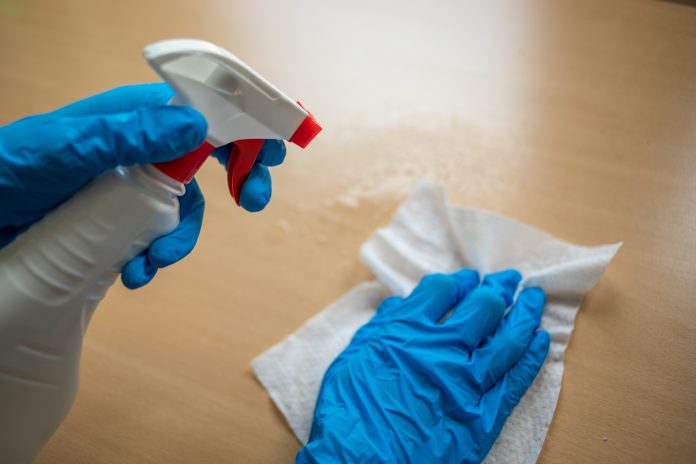Professor of Indoor Air Chemistry Nicola Carslaw examines exposure to both indoor and outdoor air pollution, through understanding the impacts of cooking and cleaning on indoor air quality
In developed countries such as the UK, we are estimated to spend around 85-90% of our time indoors, in our homes, at work and commuting between the two. As a result, most of our exposure to air pollution happens indoors, even if those pollutants were originally generated outdoors and then penetrated a building envelope. Consequently, it is extremely likely that exposure within buildings is driving an appreciable proportion of the disease burden attributed to air pollution. However, measurements of air pollutants and regulation around air quality guidelines, focus almost entirely on the outdoors. Furthermore, outdoor air quality is likely to improve in the future through measures such as vehicle electrification. Therefore, to fully understand air pollution exposure and how it will change in the future, we need to consider exposure to both indoor and outdoor air pollution.
Sources of indoor air pollution
Although most people are familiar with key sources of outdoor air pollution such as road traffic emissions and agriculture, they are less familiar with indoor sources of pollution. Some indoor air pollution originates outdoors, for instance through open windows and doors, particularly if a home or workplace is situated on a busy road. There are also numerous indoor sources, such as cooking, fuel-burning on open fires or in inefficient/poorly maintained stoves, cleaning, DIY activities, smoking, the use of personal care products and air fresheners, emissions from furnishings and building materials, as well as bio-effluents (e.g., carbon dioxide) from people. Finally, chemical and physical interactions between air pollutants and building surfaces can make further air pollutant species. The indoor air quality in a building will therefore depend on its location, how it is ventilated (natural or mechanical and at what rate) and what activities are going on inside it.
Energy efficiency measures in recent years have produced increasingly airtight buildings so that air pollutants emitted indoors typically take longer to be diluted and removed. Such measures are clearly important to deal with the pressing climate emergency, but may lead to adverse impacts on indoor air quality if most of the sources of air pollution are indoors. For instance, cooking can produce nitrogen oxides and particulate matter, sometimes leading to high concentrations of particulate matter that can exceed acute health standards over several hours. (1) Cleaning is another regular activity indoors, and the prevalence of asthma amongst domestic cleaning staff suggests that cleaning activities may cause adverse health effects in some people. (2) The most frequent cause of non-work-related hospital admissions for chemical-related respiratory disease in the U.S. is exposure to household cleaning products. (2)

The IMPeCCABLE project
At the University of York, we are trying to understand the impacts of cooking and cleaning on indoor air quality through the IMPeCCABLE (IMPacts of Cooking and Cleaning on indoor Air quality: towards healthy BuiLdings for the futurE) project. This 2.5-year project is funded by the Engineering and Physical Science Research Council (EP/T014474/1) and also involves the Universities of Nottingham and Chester. The project combines world-class experimental and modelling expertise to quantify the emissions and reaction products from cooking and cleaning. It will also help us to identify strategies to remediate against high air pollutant concentrations indoors, hence leading to improved building design and management and enhanced indoor air quality.
IMPeCCABLE is using a series of experiments that will be carried out on increasing spatial scales with each set informing the design and interpretation of the next. We started with a simple chamber system, will move onto a simulated room and finally a furnished test house. This system of scale-up will allow us to understand the chemical processes in a simple chamber system first, before moving on to increasingly complex and more realistic environments. By introducing complexity in stages, we can better understand the fundamental processes, enabling informed recommendations to be made to improve future indoor air quality.
So far, we have conducted chamber studies investigating emissions from different cooking oils with and without a range of dried spices and have also studied what happens when you cook a stir fry and a chilli. Preliminary results are showing us that the procedure is complex, with peak concentrations of different pollutants at different times depending on the stage of the cooking process. So, adding spices, meat or canned tomatoes to a pan at different stages of the cooking process can impact the pollutant emission rates and composition. With our cleaning experiments, we are investigating a range of cleaning products including market leading brands, supermarket brands and products that are marketed as ‘natural’ or ‘green.’ Interestingly, the latter products often contain similar chemicals to the standard ‘non-green’ equivalents: natural ingredients do not necessarily equate to lower emissions.
How can exposure to indoor air pollution be reduced?
There are several ways to lower exposure to indoor air pollutants. Avoid unnecessary personal care product use, select unscented products where possible and use cream products instead of spray products. Use a cooker hood (that ventilates outdoors) while cooking and preferentially use the back rings on a hob where the extractor fan tends to work more efficiently. If you are upgrading your kitchen appliances, choose electric or induction over gas. Use an extractor fan when showering to avoid the accumulation of mould in your bathroom. Ventilate your home regularly with outdoor air: if you live near a road, use a window on the other side of the building. Finally, be wary of air-cleaning devices. Those using HEPA filters can be useful, but others are less so and some use chemical reactions internally that can cause harmful products to be emitted upon use. (3)
References
- Logue, J.M., et al. (2011), Hazard assessment of chemical air contaminants measured in residences (Indoor Air, 21, 92-109)
- Medina-Ramón, M. et al. (2005) Asthma, chronic bronchitis, and exposure to irritant agents in occupational domestic cleaning: a nested case-control study, Occupational and Environmental Medicine, 62, 598-606
- SAGE EMG (2020) Potential application of air cleaning devices and personal decontamination to manage transmission of COVID-19 (https://www.gov.uk/government/publications/emg-potential-application-of-air-cleaning-devices-and-personal-decontamination-to-manage-transmission-of-covid-19-4-november-2020)
Please note: This is a commercial profile
© 2019. This work is licensed under CC-BY-NC-ND.











